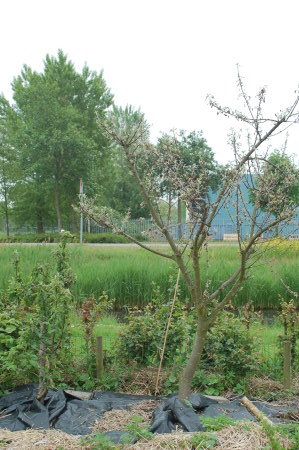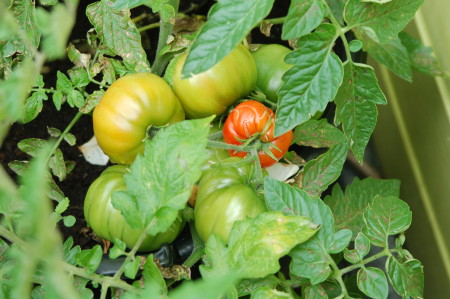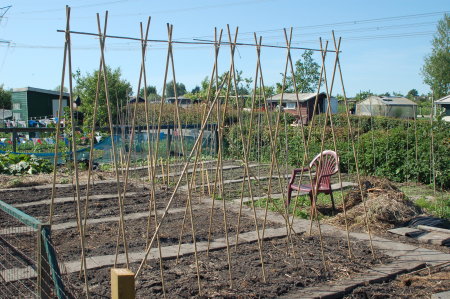
Does anyone have any idea what might be wrong with the apple tree on the right in the picture above? I’m sorry because of the background it’s hard to see, but it looks like it’s almost dead.
Here’s a close up of one of the branches. You can see the leaves have almost completely turned brown.

Below is a close up of the smaller apple tree on the left, and while it looks a lot healthier, perhaps it has an infection of some sort? Small brown spots and slightly withering leaves? Maybe it’s the same thing that is causing the problem with the almost dead looking tree?
The smaller, healthier looking tree on the left is the same tree I posted about several days ago that has the canker infection.

Here’s a little more information about the tree on the right:
Last year it produced apples, but after they were about 2cm in diameter they turned brown and fell off the tree. This year it didn’t set any fruit, but it did bloom.
I plan to remove the tree anyway, because it’s too close to the tree next to it (about 1m away) and it’s in the wrong part of the garden. Mostly I’m interested in understanding what’s happening. I’m pretty sure it’s the only pollinator available for the tree on the left, so I can’t remove it until I replace it with another tree of the same flowering period, or I won’t get any apples on the remaining tree.
The ground in this part of the garden is very poor and on the wet side, and the previous gardener was keeping these fruit trees alive with chemical fertilizer which I’ve stopped using. I did put quite a bit of compost around these trees this year. The previous gardener never pruned his trees, but I have been pruning them for the last 2 years since I’ve had this garden. I’ve planted some nitrogen fixing trees nearby, but they are too young and haven’t had a chance to fix any nitrogen yet. I also removed a nearby tree over the winter, so this tree has a little more space than it had last year.
The pH in my garden is mostly 6-6.5, and I did give these trees a few handfulls of lime this spring. While I don’t know exactly what the pH is here, it’s probably close enough to being right for apple trees.







